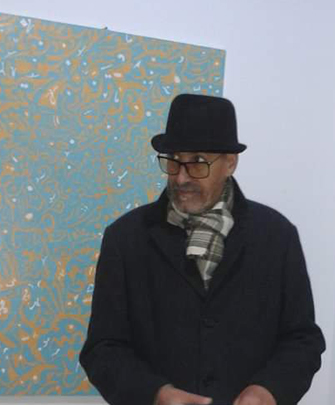Abdelaziz Nassib El Mesnaoui

Fine critic reading Khaira Jalil; The artist Aziz Al-Mesnawi: The primacy of the line and the formation of abstract, Moroccan image in the alphabet of contemporary plastic art. The ordinary contemplator of the work of the artist Al-Misnawy intentionally realizes that these are artistic works that are permissible, rooted, open, and revealing the creative possibilities of Moroccan culture. The artist Al-Musnawi, referring to his training, is a self-made artist who professes the art of theater and acting, and we know that the theater is the father of the arts and what increases the depth of his experience is his specialty primarily, before he ascended the stage as an actor, in the art of decoration, which was based on drawing paintings representing the space of the play, which It made the artist not feel the slightest complex a shortage of "despair in his heritage or in his specific local culture." Al-Musnawi is another artist who consciously practices his art in the sense of creativity in his deepest aesthetic philosophical concept and does not become alienated from Moroccan culture, especially "popular" in its various patterns and live expressions, but His touch manifests itself in furnishing these paintings with writings in their general appearance is Moroccan writing, which makes us wonder about what this writing is and in what framework can be included? And how was it possible to synthesize between the caligraphy and the drawing to come out with a formative work that has a cultural reference for an artist who has a character as a painter and a character as a Moroccan theater? . The form has become the artist Aziz Al-Misnawi is the precious value of art and its distinctive and the form in his works clarifies, enriches and organizes complexity, and unifies the structural elements of the artwork in line with the biology of the Moroccan popular heritage from an oral or written culture in the framework of employing the Moroccan calligraphy in the formal and semantic construction to unify the elements of the artistic painting The furnishing of his paintings with coded Arabic writing is an extension of his popular culture and his Sufi formation, which relies mainly on the access of the master or the Qur’anic book. In the context of my attempt to classify this writing that he employed in his paintings besides drawing: This is an extension of the popular culture in which the theatrical artist originated, the question that arises: Why is the artist resorted to this line to furnish his plastic paintings?

